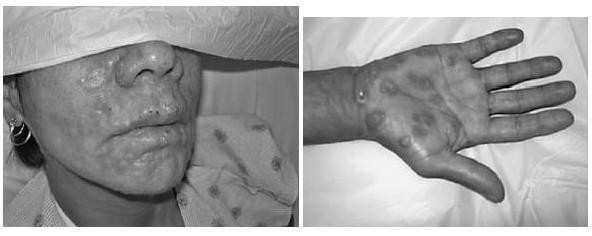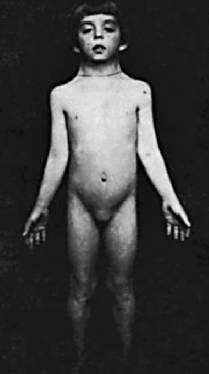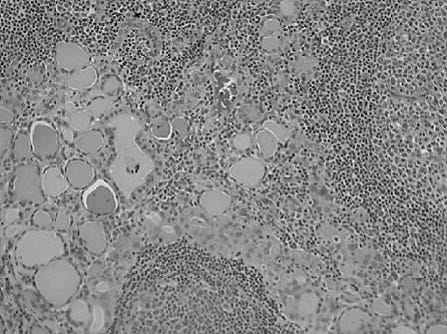USMLE-STEP-3 Online Practice Questions and Answers
A 72-year-old diabetic is transferred to your hospital for fever and altered mental status in the late summer. Symptoms started in this patient 1 week prior to admission. On physical examination, the patient was disoriented. There were no focal neurologic findings. There was a fine rash on the patient's trunk. On oral examination, there were tongue fasciculations. A lumbar puncture was performed which showed a glucose of 71 and a protein of 94; microscopy of the cerebrospinal fluid (CSF) revealed 9 RBC and 14 WBC (21 P, 68 L, 11 H). The creatinine phosphokinase was 506. An electroencephalogram and MRI of the brain were normal. What is the best interpretation of these findings?
A. The patient may have cryptococcal meningitis.
B. The patient may have disseminated candidiasis.
C. The patient may have West Nile virus.
D. The patient may have Coccidioides immitis infection.
E. The patient may have rhinocerebral mucormycosis.
A 34-year-old female sex worker presents with a several week history of fatigue, malaise, fever, and a 10lb weight loss. Over the last 2 weeks, the patient noted a rash on her face, torso, arms, legs, palms, and soles. The patient is HIV negative on a test 2 months ago, has had hepatitis B, gonorrhea, and chlamydia. The patient has an oral temperature of 100.6°F, and generalized lymphadenopathy. The patient does not have any lesions in the mucous membranes.

What is the diagnostic test most likely to explain this clinical presentation?
A. a hepatitis B surface antigen test
B. cervical smear for rapid tests for gonorrhea and chlamydiae
C. a skin biopsy
D. a rapid plasma reagin (RPR) and microhemagglutination assay for Treponema pallidum (MHA-TP) test
E. an HIV viral load by polymerase chain reaction (PCR)
A 55-year-old woman presents to your office with painful hands, causing difficulty opening jars and turning the key in the ignition of her car. She is fatigued and she notices joint stiffness, but limbers up by lunch. She has trouble getting her rings off because of enlarging knuckles. About a year ago, she tried some OTC ibuprofen, which seemed to help, but led to the development of a bleeding ulcer severe enough to require transfusion and ICU care. Otherwise, her health is good, and her review of systems is negative. Your physical examination reveals tenderness and swelling at the index proximal interphalangeal and metacarpophalangeal joints bilaterally. There are small effusions on both knees. She has tenderness to lateral compression of the forefoot area bilaterally.
The test ordered above is negative and an anticyclic citrullinated peptide (anti-CCP) antibody is strongly positive (600). Which of the following is the probable source of her symptoms?
A. cryoglobulinemia
B. osteoarthritis
C. polymyalgia rheumatica
D. SLE
E. RA
A 23-year-old African-American presents with acute-onset pain in the abdomen, back, and legs. On physical examination, his pulse is 115 bpm, respiratory rate is 20, blood pressure is 100/70 mmHg, and temperature is 101°F. There is scleral icterus, a s ystolic ejection murmur at the right upper sternal border, bilateral rhonchi, a right upper quadrant abdominal scar from a cholecystectomy, and a diffusely tender abdomen without rebound. A neurologic examination is normal. A peripheral blood smear is shown in Figure

.
Among the initial orders for this patient should be which of the following?
A. broad-spectrum antibiotics for community-acquired pneumonia
B. type and hold for 2 units packed RBCs
C. an arterial blood gas
D. a CT scan of the abdomen
E. analgesics
A 17-year-old female presents with delayed puberty. Her mother reports her daughter has never menstruated. On examination, the patient is 59 in. (4 ft 11 in.) tall and is shown in Figure. Which of the following tests is most likely to confirm the diagnosis?

A. karyotype
B. follicle-stimulating hormone (FSH)
C. luteinizing hormone (LH)
D. cranial magnetic resonance imaging (MRI)
E. growth hormone (GH)
A healthy 38-year-old G4P3003 presents for amniocentesis. The karyotype returns as shown in the Figure. What is the diagnosis?

A. Down syndrome
B. Patau syndrome
C. Edwards syndrome
D. Turner syndrome
E. Klinefelter syndrome
A 12-year-old boy is brought into the office by his mother, who states, "I can't deal with this anymore!" She appears exasperated, claiming that her son has been getting into more and more trouble over the past 15 months since the finalization of a particularly long and difficult divorce. He has been leaving the house at night without notifying his mother or telling her of his whereabouts. She suspects that he is responsible for the increased vandalism in the neighborhood. He has recently been caught shoplifting at a nearby store. His grades have always been poor, but he has just been suspended for missing classes and skipping school over the past year. He has often come home with evidence of having been in fights. She suspects that he may be hanging out with gang members. She is afraid of his ending up in jail and "becoming like his father."
Ahistory of which of the following premorbid diagnoses would most likely be found in this patient?
A. antisocial personality disorder
B. ADHD
C. autistic disorder
D. childhood schizophrenia
E. mental retardation
A 39-year-old woman presents to the office for the evaluation of a mole on her left arm. It has been present and enlarging over the past 6 months. It itches and occasionally bleeds. How would you advise this patient regarding sun exposure?
A. A cotton T-shirt worn while swimming provides adequate protection from the sun for the chest and back.
B. Melanomas are more highly associated with intermittent sunburns than cumulative sun exposure.
C. Tanning booths are recommended for persons desiring a suntan, as they are not associated with an increased risk of skin cancer.
D. To protect against skin cancer, a sunscreen needs to inhibit only UV-B rays.
E. Waterproof sunscreen does not need to be reapplied after swimming.
Amiddle-aged female presents with a painless enlargement of the lower aspect of the neck. With appropriate testing this is proven to be thyroid enlargement. Thyroid function tests were normal. Asurgical intervention was performed for diagnostic purposes. Figure below depicts a representative area of how most of thethyroid gland histologic features were seen. What are the clinical thyroid function test characteristics of the last stages of this disease?

A. thyrotoxicosis
B. normal thyroid function tests
C. some degree of hypothyroidism
D. invasion of the recurrent laryngeal nerve
E. hoarseness
Ahistory of which of the following conditions would result in the greatest increase in the likelihood of developing colon cancer?
A. Crohn's disease
B. diverticulosis
C. hamartomatous polyp
D. pseudomembranous colitis
E. ulcerative colitis

